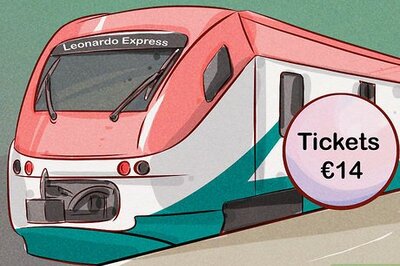
views
Indian Railways is a statutory body that operates India’s national railway system under the Ministry of Railways, Government of India. It manages the world’s third-largest railway network. According to the latest report, like a common consumer, Indian Railways also compares the rates before buying anything, especially electricity. This change has been made to save money. Now this new initiative is said to be yielding benefits. The Jhansi division of North Central Railway has saved more than five crores using this method.
Recent reports suggest this new method of saving will be adopted in other zones as well. According to Manoj Kumar Singh, Public Relations Officer of Jhansi Division of North Central Railway, in the financial year 2024–25, a revenue saving of Rs 5.28 crore in electricity expenditure from the Madhya Pradesh region in April alone. This saving has been made possible by purchasing electricity from the open market.
According to reports, this saving has been done at 10 stations in the Madhya Pradesh region. This includes the sub-stations of Datia, Hetampur, Gwalior, Bhind, Harpalpur, Niwari, Malanpur, Isha Nagar, Sank, and Basai.
It is worth noting that Indian Railways is adopting new methods to save money. For example, Northern Railways is earning crores of rupees by scrap sales. This zone has become number one in the country in terms of earning from scrap sales. According to the railways, passenger facilities are being improved by saving money in this way.
As per earlier reports, over the past few years, the Indian Railways has bought electricity from two main sources, which include:
Directly from the free market, using a competitive bidding process. This implies that power-generating companies, or gencos, bid or offer to sell electricity to the railways. And the railroads choose the one that quotes the best price.
They also trade excess electricity on the Indian Energy Exchange (IEX). However, they sell their excess electricity during the day on the exchange. And they buy back power at night when demand peaks and tariffs are low. That is simply because the railways require more power at night when the majority of trains run. On the other hand, the power usage is lower throughout the day because that’s when the majority of the maintenance or repair work happens.




















Comments
0 comment